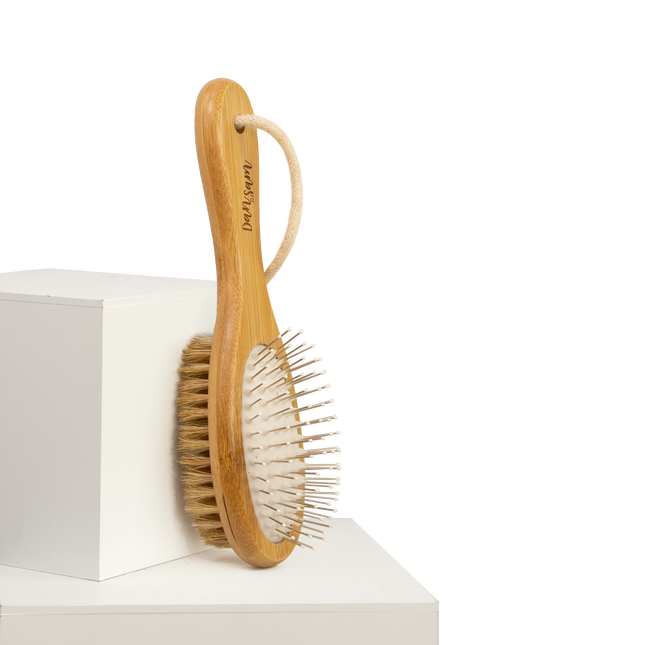
Summer Grooming Tips for Your Dog
, 4 min reading time

, 4 min reading time
Summer is approaching fast, and we all know what that means. It’s time to store away the winter woollies and unpack your swim trunks! However, when preparing for the warmer months, your furry friend’s coat may need a little extra attention.
Summer is approaching fast, and we all know what that means. It’s time to store away the winter woollies and unpack your swim trunks! However, when preparing for the warmer months, your furry friend’s coat may need a little extra attention.
Below are some of our top recommendations to ensure your pet stays cool and comfortable this summer.
We are often more active and adventurous with our pets as the weather gets warmer. Whether that might be going for longer walks or hikes, heading to the beach or river for a swim, or simply playing outside more regularly. Our summer adventures can lead to coats becoming tangled more easily. Regular brushing is one of the easiest and most effective methods for managing tangles and keeping your pet cool by allowing proper airflow through the coat. As you brush, ensure that you brush and comb right down to the skin, not just the top layer of fur.
If brushing becomes increasingly tricky, consider trimming your pet’s coat. For curly coats, this approach can effectively manage their dense fur. However, it is important for pets with double coats to avoid trimming as this can interfere with how the coat naturally works to protect them against the elements. Ask your local groomer for advice if you need help determining what is best for your pet.
Brushing is also a great tool for monitoring the condition of your pet’s coat and skin, as well as for detecting injuries and unwanted foreign bodies, such as grass seeds.
Whether your dog has a long coat, curly coat, double coat, or something in between, the big question on everyone’s mind is, “Should I shave my dog to keep him/her cool this summer?”
There is little to no evidence that shaving a dog’s coat will help keep them cool in the summer. In fact, there is more evidence to state the opposite. A dog’s coat acts as insulation, designed to keep them cool in the summer and warm in the winter. Shaving this down interferes with their inbuilt ability to regulate temperature and can expose them to other risks such as subjecting your pup’s skin to harmful UV rays, risking hair growing back abnormally and increasing the chances of heat stroke.
Whilst shaving your dog this summer might not be the best approach, a stylish, shorter haircut (not shaved) can help with keeping their coat dry and tangle-free. Less hair also means less mud and debris to track through the house.
In some cases, a shaved tummy and paw pads can help your dog get direct contact with cooler surfaces, especially if they are a senior pooch or less able to get around. However, we recommend that you do not shave your dog at home and instead consult a veterinarian and groomer.

Grass seeds are a common problem amongst our furry friends in the warmer months. Common areas to find/ particularly watch out for grass seeds are:
To minimise the likelihood of grass seeds becoming lodged and increase the chances of easily identifying foreign objects, regularly trim the build up of hair on your dog’s feet/ toes and maintain a regular brushing routine, focusing mainly on the noted spots.
If you discover grass seeds in your pet’s coat or on/in its body, it is advisable to remove them promptly. Occasionally, this may be challenging if the grass seed has become deeply lodged. Using tweezers can provide the necessary grip for easier removal. If you are unable to extract the grass seed, it is recommended that you consult a veterinarian or groomer as soon as possible to prevent it from becoming embedded in the skin.
Hot spots are red, inflamed areas on a dog’s skin that can cause pain, discomfort and itchiness. These lesions can arise from various factors, including severe allergies or skin trauma, such as infected sores or prolonged moisture retention in matted or compacted fur. Regular grooming will minimise the occurrence of hot spots on your dog.
We recommend seeking veterinary treatment to identify and address any underlying causes if you encounter a hot spot.
We recommend these products to help with your pet.


$255.69 $167.00


$95.39 $75.00

$30.69 $24.00